
We kindly inform you that, as long as the subject affiliation of our 300.000+ articles is in progress, you might get unsufficient or no results on your third level or second level search. In this case, please broaden your search criteria.

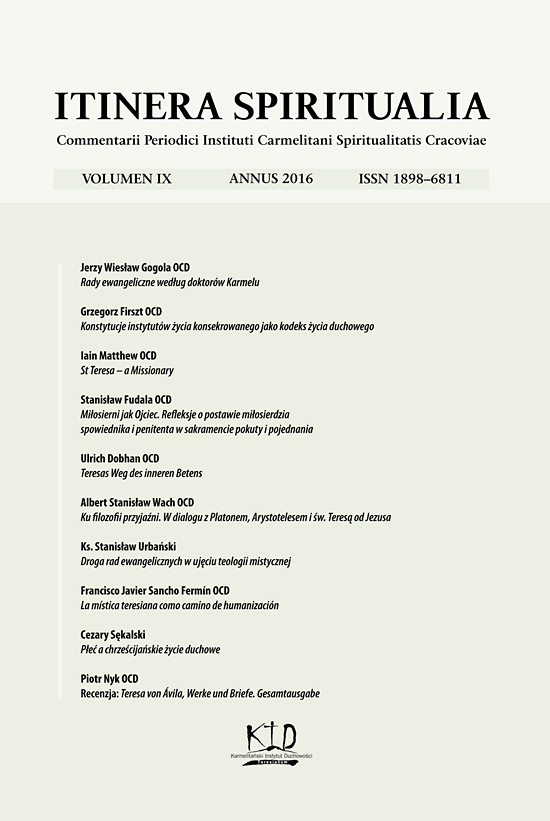
In Christianity, the goals of the spiritual life, namely sanctity and perfection, can also be considered from a male and female perspective. The female perspective would mean, most of all, the reality of belonging to God, a close relationship in which we welcome the gratuitous gift leading to divinization. The male perspective is more mission-oriented and moral in its character; it focuses on an obligation, a concrete response to the gift of love. We can say that the perspective based on a relationship is more feminine, and the one which evokes moral ability rather masculine. The spiritual life, as such, should include a specific balance between these two factors.
More...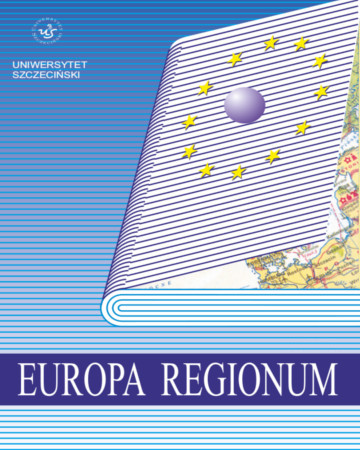
A social partnerships may have significantly affected the quality* of life in smallcommunities. The Local Action Group (LAG) is one of the sort of such partnerships, which are created in rural areas. The author of this article паз pointed out the factors related to the functioning of the LAGs. The present study is focussed on the work of two selected LAGs in West Pomerania Voivodeship. The area covered by the action of these groups had been studied and a social activity*, and economic potential were described. The LAGs' activities are dependent on the financial capacity, therefore the author pointed to the source of funding and the benefits that may arise from the LAGs' functioning
More...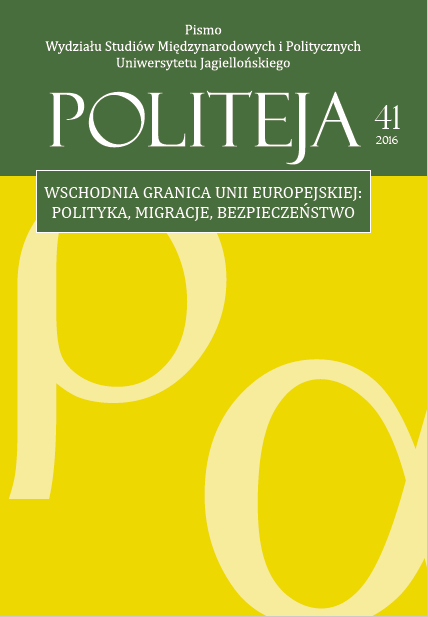
Comparative studies show an ambiguous effect of the application of administrative controls on the level of migrant inflows, with the relative impact of the measures weaker than that of long-term economic or cultural factors. The case of Central Asian migration to Kazakhstan and Russia demonstrates the interplay of administrative measures and economic shocks with strategies of migrant groups and individuals. The review of recent surveys, interviews and focus groups with migrants from Kyrgyzstan, Tajikistan and Uzbekistan suggests that changes in the policies of destination countries have a limited impact on their own plans. The long-term determinants, such as the support provided by diasporas and the fundamental economic pull and push factors mitigate the effects of sanctions or facilitating measures.
More...
Most of the Central and Eastern European and post-soviet countries have a longlasting tradition of emigration and possess large diasporas, often dispersed all over the world. Due to their volume and socio-economic position diasporas become on the one hand independent entities in international relations, on the other – influential actors on the political scene in the country of origin and targets of state’s policy. This article aims to analyze the political impact of diasporas on the relations with country of origin as well as on international politics. The case studies are countries of Central and Eastern Europe and post-soviet region. The article consists of four parts. The first is devoted to the conceptual considerations around the definition of diaspora and its role as subject and object of politics. The next two parts analyse the place of diasporas as actors in international relations and in the internal politics of the countries of origin. In the last section the diaspora politics are discussed, illustrated by selected examples of countries of the region.
More...
It is in the interest of the European Union and Poland to ensure that the borders with its neighbors are not a barrier to trade, social and cultural interchange or regional cooperation. Such indication was included in the preamble of the Regulation No. 1931/2006 of the European Parliament and of the Council laying down rules on local border traffic at the external land borders of the Member States. The institution of local border traffic is very popular among the citizens of border areas. Thus – in the light of scale of the phenomenon – numerous questions arise: whether (in the economic dimension) the balance of the consequences of the implementation of the agreements on LBT is positive? Does an asymmetry of benefits take place, ie. the implementation of the agreement is more beneficial for one of its sides? Given the above views, the purpose of this article is the assessment of the economic consequences of its implementation (on the background of the prerequisite for the establishment of the LBT).
More...
This article aims to analyze the factors and significance of particular subjects and instruments of the Latvian ethnic policy. It will be examined in the context of relationships occurring between Latvia’s policy on ethnic minorities, the attitude of the Russian-speaking minority and the Russian Federation’s foreign policy on its fellow-countrymen abroad. We will also attempt to answer the question of how the Latvian ethnic policy influences horizontal interrelations between the state’s individual ethnic groups – whether it alleviates social tensions or intensifies them.
More...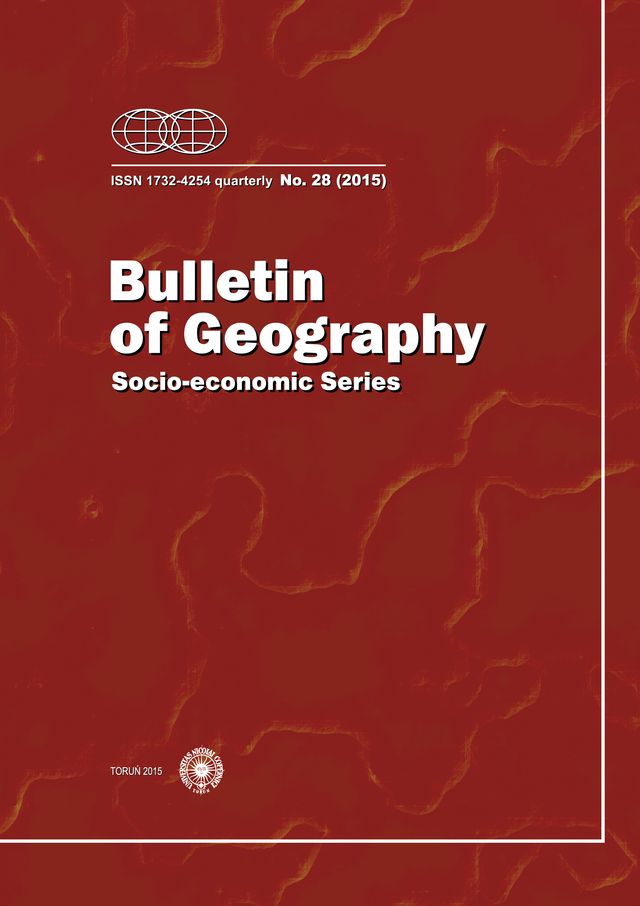
Growing trends of fear and insecurity in cities have sparked the re-visitation of gating, posing significant problems for citizens and policy makers alike. Gated developments are a global phenomenon occurring in diverse countries in both the developed North and developing South. Metropolitan areas in South Africa have also witnessed a rapid increase in the number and spread of gated developments since the late 1980s. Development of enclosed neighbourhoods has become increasingly popular, gaining widespread support for their utopic lifestyle and safety features. On the whole, high levels of crime and fear of crime have led to the construction of defensible space, in the form of gated developments, resulting in elevated levels of segregation. This paper provides a spatial analysis on gated developments in the non-metropolitan setting of Bloemfontein. The pattern and timeframe of gating in this city is shown to be similar to those found elsewhere in South Africa and, indeed, globally. Overall, it is the contention that gating is a trend not only seen in large metropolitan areas, but across the entire urban hierarchy of South Africa, and, as a consequence, requires investigation far beyond its metropolitan regions to more fully understand gated developments.
More...
Over the last decade Polish cities have become popular destinations of the foreign clubbing tourism. Interest of foreign tourists, however, is not reflected in the interest of scientists, because clubbing tourism-related issues have not been extensively studied in the literature regarding Polish cities. In this paper the authors have tried to fill this gap by analysing the potential of city break clubbing tourism in Wrocław, the city which has been selected the European Capital of Culture 2016. As part of the analysis, the following elements affecting the development of this type of tourism were examined: transport accessibility, clubbing infrastructure (discos, nightclubs and pubs), and other factors (accommodation facilities and selected tourist attractions). The transport accessibility data include only regular direct flights carried by low-cost carriers (LCC) in 2014 (number of connections, frequency of flights and ticket prices), as this type of transportation is crucial for city break tourism.
More...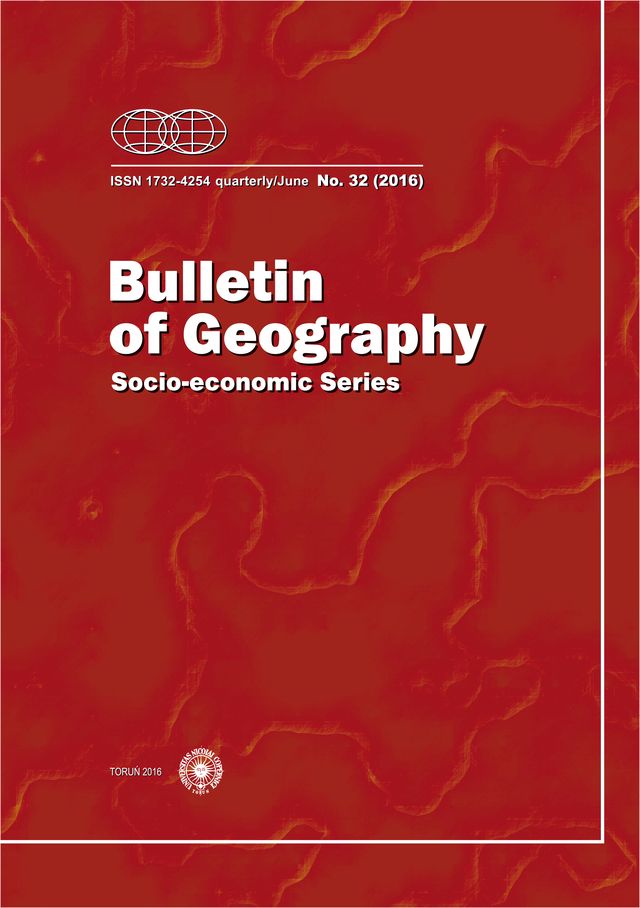
Students are increasingly recognised as important actors of urban change in contemporary cities. The article presents an analysis of incipient studentification processes in Gdańsk. Its general aim is to reveal patterns of students' presence and activity which translate into spatial and socio-economic transformations of a post-socialist city at the level of neighbourhoods. The study consists of a survey on students' residential behaviour, complemented by field and desk research. According to the results, due to the fact that Polish students' housing and lifestyle choices are limited by their low purchasing power, student-dedicated services have a rather negative impact on the quality of urban space. Furthermore, under these conditions studentification may not be regarded as a stimulus to the gentrification process, which is rather driven by hipsters and affluent foreign students.
More...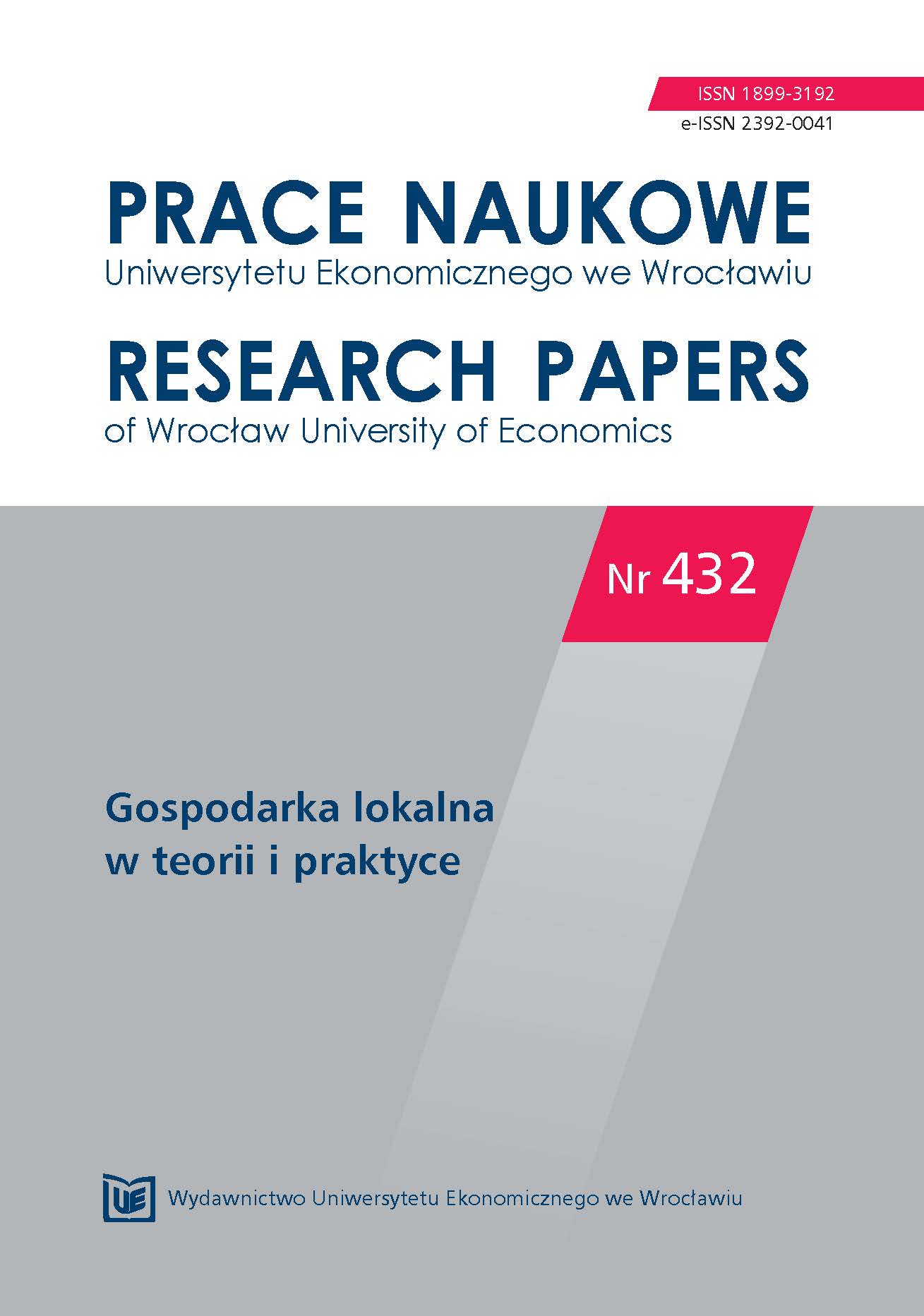
The aim of this paper is to identify trends in the marketization of selected public tasks implementation in large cities. An analysis of the implementation of selected public tasks in the form of budgetary units, local budgetary establishments and through the involvement of large cities in companies was made. The profitability of the introduction of user charges for selected public services in large cities in Poland in 2012-2014 was analyzed. This made it possible to identify key areas of marketization with the proceeds generated through user charges for services and their impact on cities’ finances. It was indicated that user charges for services in the surveyed cities, as a rule, were calculated at the level that did not allow for balancing spending on these tasks, particularly in the case of social tasks. At the same time these tasks for which self-financing was possible were separated organizationally to be implemented by municipal companies.
More...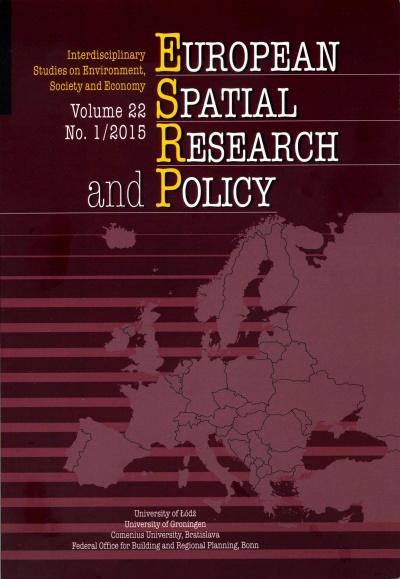
The aim of this paper is to map the spatial variations in the size of the shadow economy within Brussels. Reporting data provided by the National Bank of Belgium on the deposit of high denomination banknotes across bank branches in the 19 municipalities of the Brussels-Capital Region, the nding is that the shadow economy is concentrated in wealthier populations and not in deprived or immigrant communities. The outcome is a call to transcend the association of the shadow economy with marginalized groups and the wider adoption of this indirect method when measuring spatial variations in the shadow economy.
More...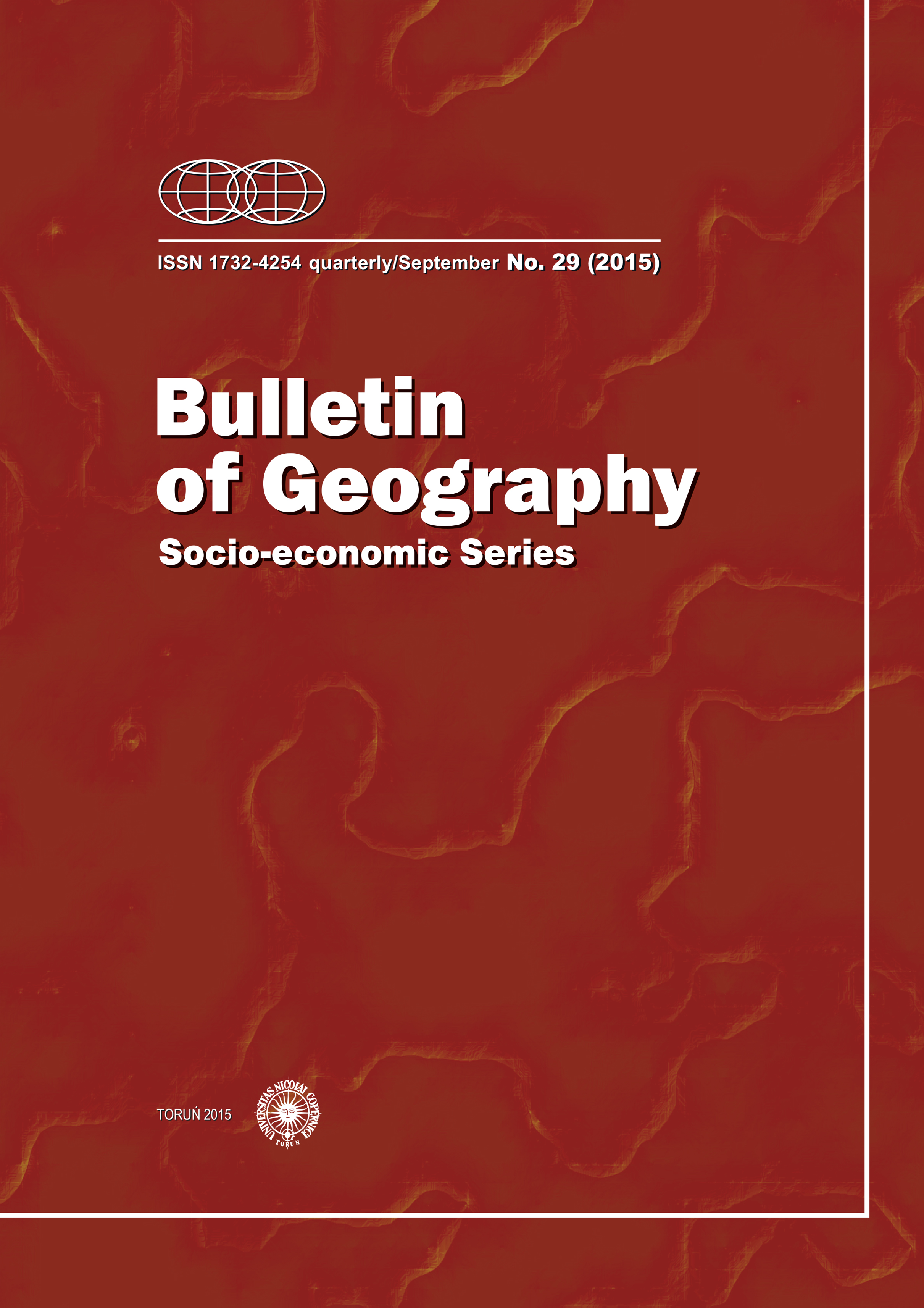
The aim of this paper was to evaluate the intensity of rural area marginalisation. As a study region, Western periphery of Poland has been chosen. The spatial scope of the research covers three border voivodeships: Dolnośląskie, Lubuskie and Zachodniopomorskie, however, the study was conducted at the local level, including 310 rural and rural-urban gminas (administrative region of the 3rd order in Poland). The statistical data were derived from the Central Statistical Office from the period of last two decades. Results revealed the differences in the level of rural area marginalization and were analysed in terms of agricultural and socio-economic aspects.
More...
The article undertakes the issue of universal values in the process of child development. e text is intended to demonstrate that during childhood children realize those values in the course of a natural development of their personalities. Consequently, we might argue that in addition to its “instrumental” meaning (involving preparation for adult life), childhood has a value in itself, like any other, unique period of human life. erefore, “being a child” is not a state barely derivative from adulthood, an undeveloped form of life, but it is a perfectly complete state within the reality of children’s world and the ways in which the child experiences it. The article also aims at emphasizing the need to treat children as in a subjective way as agents and co-creators of their own childhood.
More...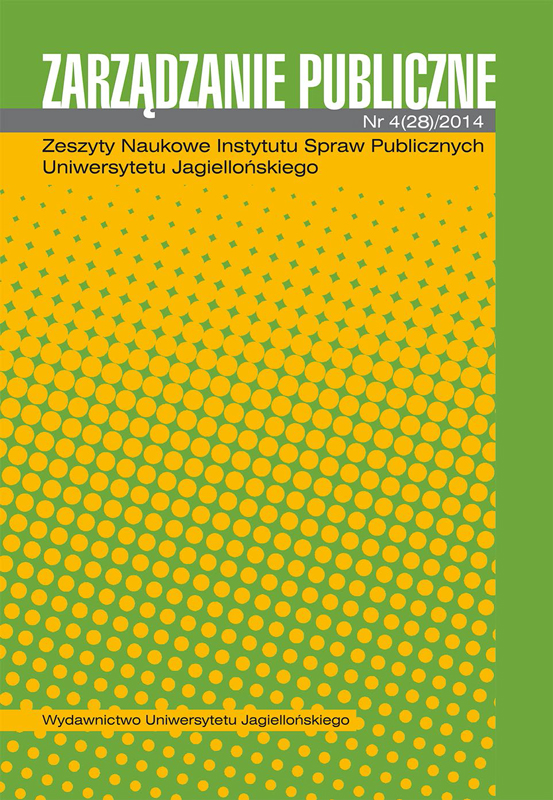
Public project management is one of the most important areas of operations of contemporary public government institutions. All investments and many public services are performed as projects. The public projects implementation capability significantly influences national economies development. Up to now there exist no model of national public projects implementation systems. Papers dealing with public projects analyze them from the point of view of single projects or institutions. The article presents the first proposal of defining a framework model of national public projects implementation systems. Such system consists of six interrelated areas: the portfolio management area, the institutions area, the processes and methodologies area, the knowledge management area, the public projects actors area, and the development of national public projects implementation systems. The presented framework is of descriptive type – it was developed as the result of an analysis of solutions in this area performed in over 90 countries.
More...
The ongoing global socio-economic changes combined with everyday broader access to information and civic awareness fast growth results in new sophisticated challenges posed in front of public organizations. Currently, the process of project development must not only be efficient and taking into consideration all stakeholders needs. More and more important becomes flexibility in actions allowing quick adaptation to rapidly changing requirements and environment. The other crucial element is transparency [Ustawa, 2011; www.gov.uk; Lathrop, Ruma, 2010] which let’s all the external organizations and civil, who are in most cases the key stakeholders, constant verification of taken actions. It’s also very important to engage the main stakeholders in the development process to make sure that the final product will meet their expectations as well as fulfill their needs. Given such a ranking cell it is necessary to calibrate the method of implementation of the projects. Therefore, more and more public organizations in the world consider the implementation and use of Agile methodologies [http://agilemanifesto.org], like Scrum [Schwaber, Sutherland, 2013] or Kanban [Anderson, 2010] as well as use of high-tech informatics solutions. In this paper the examples of the use of Agile methodologies in organizations such as the FBI – in the Sentinel project [www.fbi.gov], the municipality of San Jose, CA [http://sanfrancisco.cbslocal.com] will be presented. In the conclusion section potential advantages and disadvantages of Agile methodologies use in public sector will be described.
More...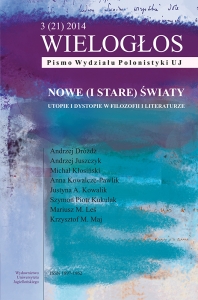
Author of the article offers an insight into three threads of utopian thinking in a world wide web environment. In the first of them, cyberspace operates – in terms of Gibson’s protypical Neuromancer – as a space of decentralized exchange of ideas. In the second, hypertext brings a promise of non-linear and democratized perception, an open-ended eutopia of shared knowledge. In the third, the web is a place of an intriguing meeting of man and machine inside posthumanism and digital humanities movements.
More...
The paper aims to analyse worldbuilding strategies in a variety of eutopian (predominantly in literature) and dystopian narratives (in literature, movies and video games), in relation to the world-centred analyse that disseminates in contemporary narrative studies. Consequently, the study derives two possible worldbuilding models from a representative number of utopian texts, that is (1) a typical for early modern utopias and modern imaginary voyages “portal-quest” model (world W1 → gate / journey → world W2) and (2) an emblematic for the most postmodern dystopias model juxtaposing the centre and the peripheries, that deconstructs the first one in postcolonial perspective. Therefore, it becomes possible to compare worldbuilding foundations in so different a narrative like precursory 16th century Thomas More’s Utopia (1516) and 21st century video game Bioshock: Infinite by Irrational Games – which subsequently encourages utopian studies to notice the most contemporary narrative achievements within the genre.
More...
In 1528 Erasmus of Rotterdam had published dialogue Senatulus sive Gynajkosynedrion, which is part of the popular collection Colloquia familiaria. In this text, there are women, who deliberate about organisation of future council of women. The idea of legislative women, challenging traditional social order („the world upside down”) was used by the author to indicate certain matters, relating to the social status or privilege of women. The question, which is included in the title of the article, is a result of the ambivalence of the text, because Senatulus can be readed not only as a joke of great humanist, but also as a satire on Erasmus’s contemporary political and social life.
More...
The paper takes the perspective of Fredric Jameson’s thinking about utopia (from his Archeologies of the future) and is an attempt to answer the question of the status of the theories of symbolic exchange (Baudrillard, Goux) understood as specific iterations of the utopian thinking or the utopian impulse. Jameson sees today the power of the utopian narratives in the alternatives they give to the third stage of capitalism. That is why the main problem presented in this paper is precisely the alternative vision of social and economic relations projected by the researchers referring to the models of symbolic exchange in the primitive societies. Reading the concepts of Goux and Baudrillard in the light of the Jameson’s theory of utopia is to show their proximity with thinking about magical and religious practices on one hand, and, on the other hand, to the fundamental models of social relations in the primitive and ahistorical societies present in the fable and fantasy. These primitive societies believe in the possibility of exchange with the dead and do not surrender to the model of economy governed by the general equivalents: the phallus, the sovereign, the sign, the money.
More...